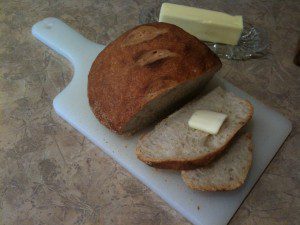I havea little secret, something I haven't written much about but want to start focusing on more. I love to teach reading and it really comes as second nature to me. I learned this around 1998-1999 when I was helping a neighborhood kids in the 5th grade. Tony was reading at a 2nd grade reading level and his teacher and school was threatening to retain him. Smart boy but had never been properly taught to read as a small child, unfortunately he is one of those quiet good kids that get left behind by teachers when they have too many students to tend to (this was his specific case). I took him to help him how to read and write better and learned that Tony was VERY proficient in Phonics but not in sight word recognition. So I started with that with him and viola! he was reading away real quick! This led to me going back to school to get a Masters in Reading K-12...it was so much fun! I actually miss being in college learning about the art of teaching reading! ;)
This past week I've had a lot of on the road time traveling to see family and I realized that I haven't writtern about that which I love so much! So I will be posting things about teaching reading in hopes that I can help someone out there that is having trouble or just starting out and could benefit from these posts.
If you are teaching reading to your little one or have a child who is having trouble reading, then it is vital that they become proficient in sight words. Why? Well because sight words are about 87% of all the words that children read in their trade books. Words like "the" "in", "a", "it", and "is" are all part of this very important list. These words are phonetically irregular words, meaning you cannot use phonics to decode them so they must be learned by sight. Knowing sight words is one of the basic building blocks when learning how to read and one that should not be ignored.
What happens if the Reading or Phonics program you selected does not include the teaching of sight words? I suggest that you do it on your own and it is quit simple. Am I saying that you shouldn't teach Phonics? NO! Never! Phonics is important or just as important as teaching sight words. Many programs fail to intergrate both of these in their reading programs, which is unfortunate but important for homeschooling moms to know. For the purpose of this post, I'm going to focus on sight words.
There are two lists but most of the words overlap. Dolch Sight Words and Fry Sight Words are the two lists you can work from. In the 1940s, Dr. Edward William Dolch created the list by using 220 phonetically irregular words and 95 common nouns to create his Dolch Sight Word List. He chose words that were most often used in children’s reading books during the 1920s and 30s. In the 1990s, Dr. Edward Fry took the Dolch researched list and created 1,000 most frequently used words and he put them in order of frequency. Children should be repeatedly exposed to these words so that they learn them quickly. This bolsters their reading self-esteem, which in turn makes them want to read more. You would be so surprised how your little Joseph or little Mary is going to want to start reading and selecting books at the library!
Each list is arranged by levels of difficulty advancing in it and the levels of infrequency, well at least the Fry list is. Dr. Dolch created his lists to be mastered by the third grade while Dr. Fry's list is separated by grade levels and goes up to the fifth or sixth grade. Each list is separated by 100 words so the first 100 words are called pre-premer words and should be learned by kindergarten the next words are learned in increments of 100 but I suggest should only be taught 5-10 at a time until mastered. Once those 10 are mastered you teach another 5-10 but always exposing them to the previous ones either by games or flash cards and with exposing them to easy reader texts.
Here are the list of words for your use in PDF format:
First Hundred
Second Hundred
Third Hundred
Fourth Hundred
Fifth Hundred
Depending on your child's ability is when you should start. For example, my six year old son is brilliant in Math but not in reading whereas my five year old daughter is the opposite so she is in kinder and he is in first and this is what we are doing this year:
Trimester 1: Words 1-150
Trimester 2: Words 151-300
Trimester 3: Words 301-500
Now this is the plan and yes I do have high expectations for them but its because of how they learn and what they can do. So far so good. There are several ways to teach sight words. Here are some examples:
1.
flash cards
2.
memory games
3.
practice tracing the words
4. use tactile things like
playdough mats or
any multi-sensory way to create the words
5. create a
power point of the words
6.
use the words to create sentences (include vocabulary from either your Science or History lessons).
7.
teach the shape of the word
8.
Sight word games
Repetition is important in learning these words by sight but it can be boring so it is vital that you make this as fun of an experience as possible! :)
Blessings,
Erika




































